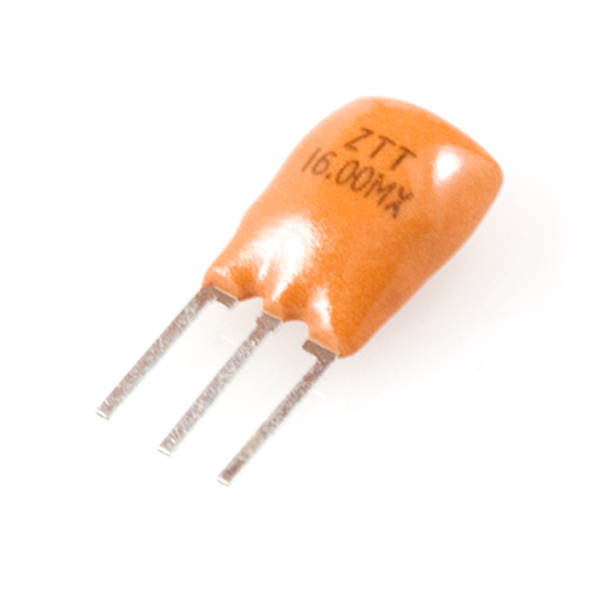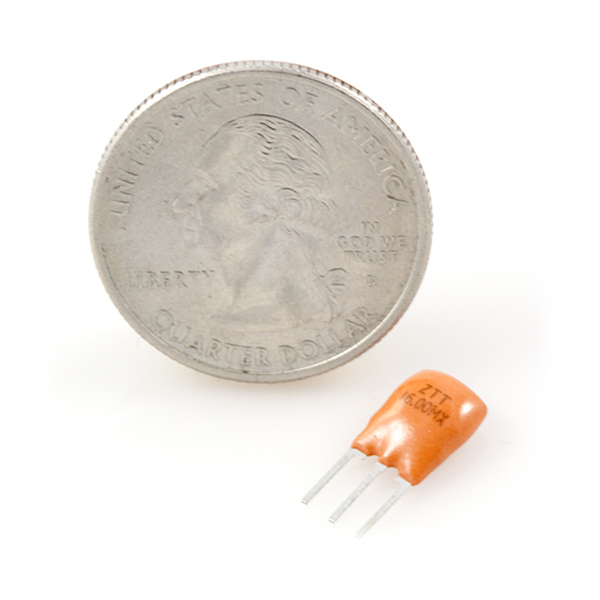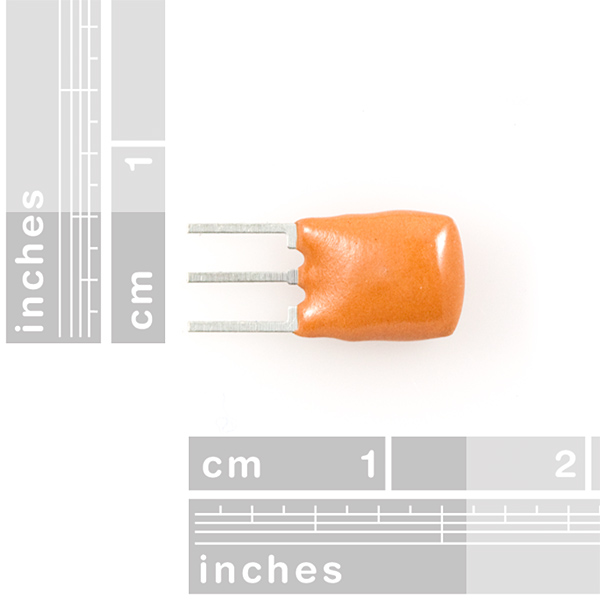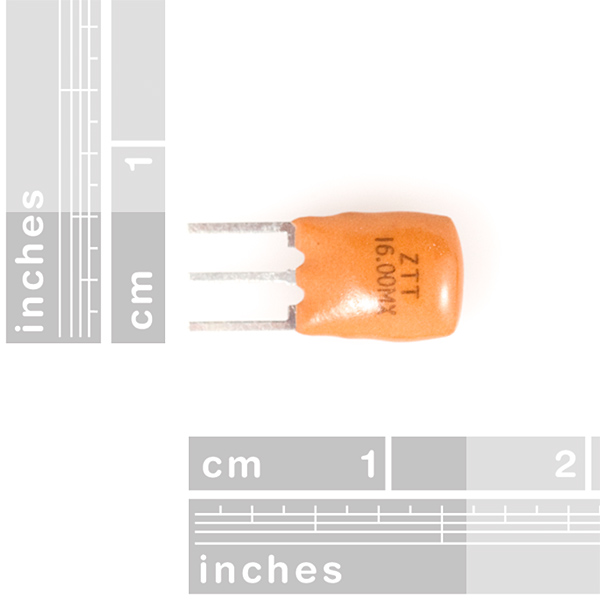Ceramic Resonator 16MHz
Resonators function like crystals, but are a lower cost solution that does not require external caps.
These resonators are +/-0.5% or better from -20C-+80C. These resonators have built-in load capacitors so no external caps are needed.
Ceramic Resonator 16MHz Product Help and Resources
Core Skill: Electrical Prototyping
If it requires power, you need to know how much, what all the pins do, and how to hook it up. You may need to reference datasheets, schematics, and know the ins and outs of electronics.
Skill Level: Competent - You will be required to reference a datasheet or schematic to know how to use a component. Your knowledge of a datasheet will only require basic features like power requirements, pinouts, or communications type. Also, you may need a power supply that?s greater than 12V or more than 1A worth of current.
See all skill levels
Comments
Looking for answers to technical questions?
We welcome your comments and suggestions below. However, if you are looking for solutions to technical questions please see our Technical Assistance page.
Customer Reviews
No reviews yet.





I tried this and it worked fine with my breadboard arduino. However, I looked up the datasheet from what is printed on the resonator package and it said it is 30pF capacitance but the ATmega328p datasheet says it needs capacitors of 12-22pF. Is this ok or am I missing something?
This is a good point. Maybe when used on a breadboard, due to high contact capacitance it would work but what if you solder it to a board?
i would recommend this product to everyone !!!
it's basically a 16MHz crystal with built in capacitors.
i use this with my atmega328 and it works great!
It is like that but has much less tolerance
i don't think tolerance is a issue.
Uhhhh... yes, it is. If you are doing anything time-sensitive, like generating sound, the speed that the code runs at will drift. And the pitch of your sound will go up and down. If you have perfect pitch like me, that can be annoying. BUT if you use a crystal, then the drift will be near zero.
yepp. pertty much it. and if you want like super accurate serial, if you need it. or tother prototcols
Would a resonator like this work as the timing element in a boost converter (http://en.wikipedia.org/wiki/Boost_converter)? I've mostly found pictures online of people using 555 timer circuits, but according to Adafruit's calculator (http://learn.adafruit.com/diy-boost-calc/the-calculator), the higher frequency, not to mention slimmer profile, of something like this would seem to make the converter more efficient.
EDIT: To be clear, I need a converter with a very high step-up ratio for charging big capacitors.
Once you buffer the resonator's output with a transistor or logic gate, you can certainly use it as a clock source for many things including a step-up. I'll note that many step-up designs involve some sort of voltage monitoring loop that changes the frequency to keep the output at a given voltage; but if you don't care about the exact voltage coming out you can run it open-loop.
If they're "lower cost", why are they the same price as the Xtals? or does "lower cost" mean lower overall cost because you don't need to buy the caps?
That's exactly the point. Also i have found more expensive crystals on the market but these seem relatively cheaper. Maybe your just getting a nice deal on crystals at sparkfun.
The datasheet doesnt seem to have a pinout. How would I connect this?
The middle pin is the ground; if you're using an atmega328 for example, the right and left pins connect to pins 9 and 10 and middle pin goes to ground.
right and left when seen looking at the label?
it doesn't matter.